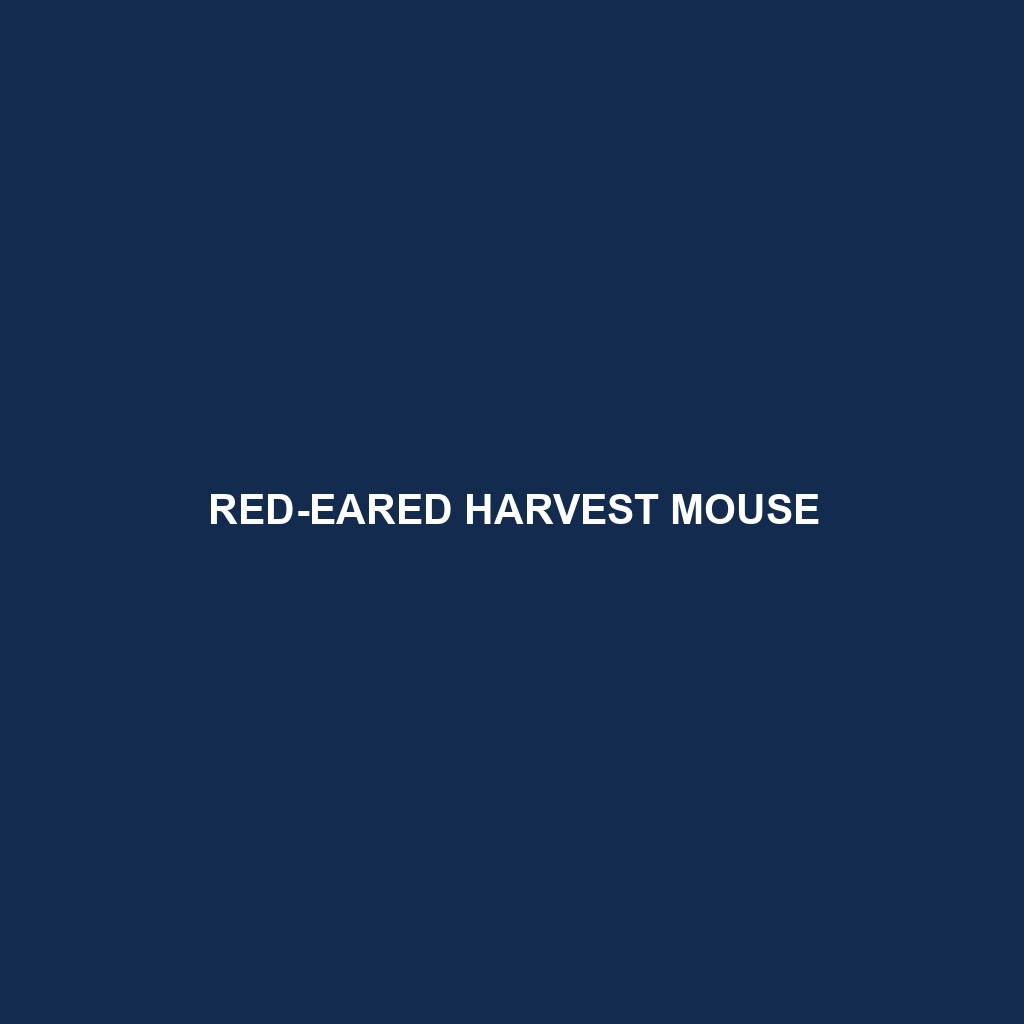Red-eared Harvest Mouse
Common Name: Red-eared Harvest Mouse
Scientific Name: Reithrodontomys megalotis
Habitat: The Red-eared Harvest Mouse is primarily found in the grasslands and open fields of North America, particularly in the central and western United States. This species thrives in habitats such as meadows, prairies, and agricultural fields where dense grass and weeds provide ample shelter and foraging opportunities. While it is commonly located from the Great Plains to the Sierra Nevada foothills, its presence can be influenced by habitat availability and environmental conditions.
Physical Characteristics: This small rodent typically measures between 6 to 10 inches in length, including its tail, which is almost as long as its body. The Red-eared Harvest Mouse exhibits a distinctive reddish-brown coloration on its upper body, with lighter beige or cream-colored underparts. One of the most notable features is the reddish patch behind its ears, which gives it its common name. Its slender body and large eyes add to its charm, making it easily recognizable among other rodent species.
Behavior: The Red-eared Harvest Mouse is primarily nocturnal, exhibiting increased activity during the night. It is known for its exceptional climbing abilities, allowing it to forage for food and escape predators in tall grass and shrubs. These mice are social creatures that often live in small colonies, where they communicate through a range of vocalizations and scent markings. Their behaviors include nesting in burrows or above ground in dense vegetation, which provides safety from various predators.
Diet: Red-eared Harvest Mice are herbivorous, primarily feeding on seeds, grains, and various plant materials. Their diet also includes a range of grasses, fruits, and occasionally insects, making them important seed dispersers in their ecosystem. They have adapted their feeding habits to take advantage of seasonal food availability, which allows them to thrive in fluctuating environments.
Reproduction: The breeding season for the Red-eared Harvest Mouse typically occurs from spring to early fall, with peak activity in late spring. Females can have multiple litters per year, with each litter containing about 4 to 6 offspring. Young mice are altricial at birth and grow rapidly, becoming independent in a relatively short period. Parental care is primarily provided by the mother, who creates intricate nests to ensure the safety and comfort of her young.
Conservation Status: Currently, the Red-eared Harvest Mouse is not classified as endangered or threatened, but habitat loss due to agriculture and urban development poses potential risks to its populations. Continuous monitoring of its status is encouraged to ensure sustainable populations in their natural habitats.
Interesting Facts: The Red-eared Harvest Mouse is known for its impressive olfactory abilities, which it uses to locate food and pheromones from other mice. Additionally, these mice can store food in their burrows, ensuring they have adequate supplies during harsh conditions or food scarcity periods. Their charming appearance and behaviors make them a fascinating subject for wildlife enthusiasts and researchers alike.
Role in Ecosystem: The Red-eared Harvest Mouse plays a crucial role in its ecosystem as a seed disperser and a food source for various predators, including birds of prey and snakes. Its burrowing activities help aerate the soil, promoting healthier plant growth. Furthermore, by maintaining populations within their habitat, these mice contribute to the overall biodiversity and balance of their ecosystems.
